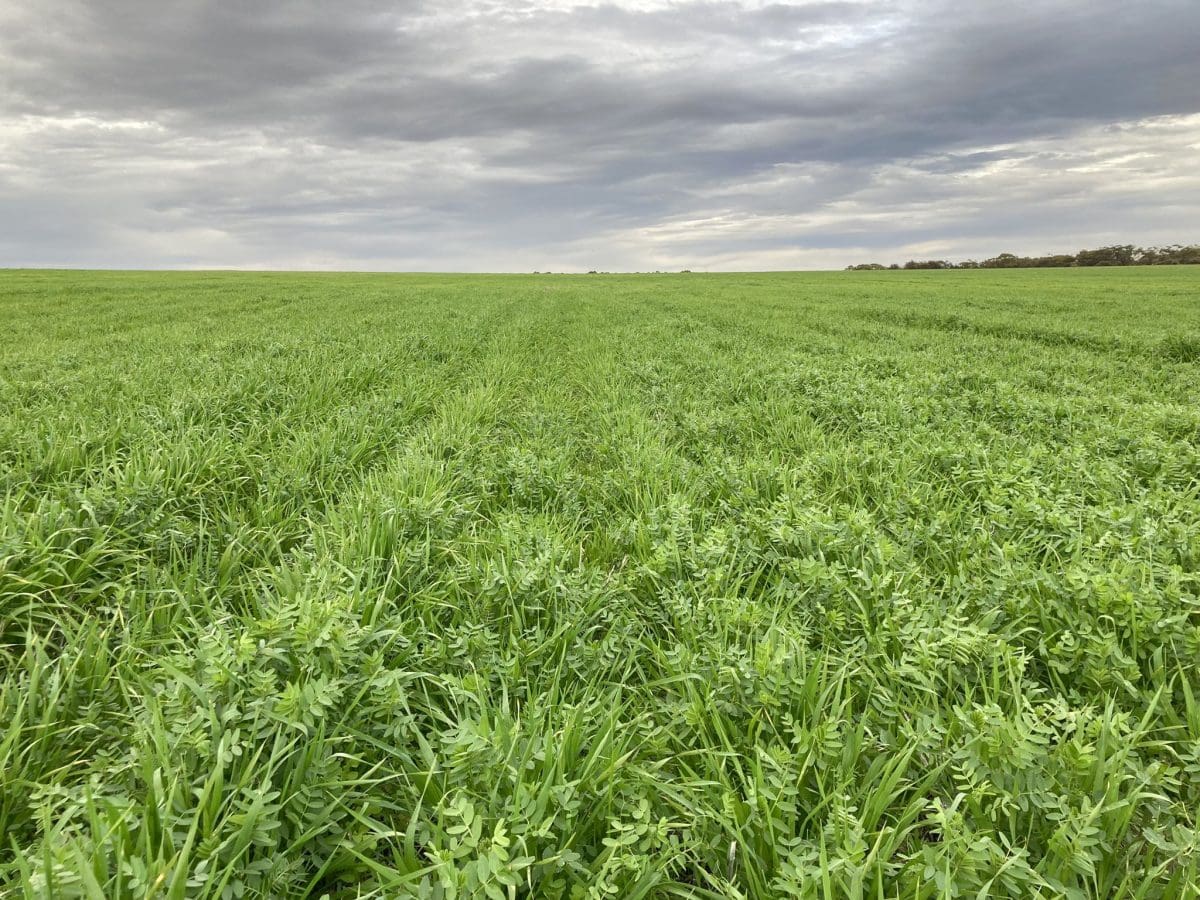
This co-sown crop of barley and vetch has gotten off to a flying start at Corrigin in WA, where showers are bolstering prospects for the state’s winter crop now in the ground. Photo: Simon Wallwork
WIDESPREAD rain across the Western Australian Wheatbelt has lifted prospects for at least average yields in winter crops in Australia’s major grain-producing state.
The rain is ideally timed for canola, lupins and oats which were primarily sown in April, and wheat and barley sown mostly last month.
In the week to 9am today, most of WA’s growing regions received 15-50mm of perfectly timed rain to germinate dry-sown crops or kick along ones recently emerged.
However, conditions remain dry in northern New South Wales, where some growers have opted to plant little or no wheat without rain to wet the topsoil.
While some locations in WA had only single-digit figures in the week to today, most gauges had 10mm or more.
Registrations in the Geraldton zone include: Chapman Valley 21mm; Eneabba 54mm; Mingenew 28mm; Morawa 16mm, and Mullewa 10mm.
In the southern Albany zone, totals include: Borden 71mm; Dumbleyung 31mm; Hyden 12mm; Lake Grace 40mm; Newdegate 26mm, and Wagin 12mm.
In the south-eastern Esperance zone, registrations include: Esperance 27mm; Ravensthorpe 30mm, and Salmon Gums 10mm.
Falls in the Kwinana zones included: Bullfinch 17mm; Cunderdin 38mm; Kellerberrin 16mm; Merredin 28mm; Tammin 30mm, and Wongan Hills 11mm.
Rain for most has fallen in two separate fronts, one in the middle of last week, and the other bringing rain into today.
Most growing regions in South Australia and Victoria have picked up some handy falls also in the past week, but amounts petered out north of the NSW-Victorian border.
Grain Central: Get our free news straight to your inbox – Click here

HAVE YOUR SAY